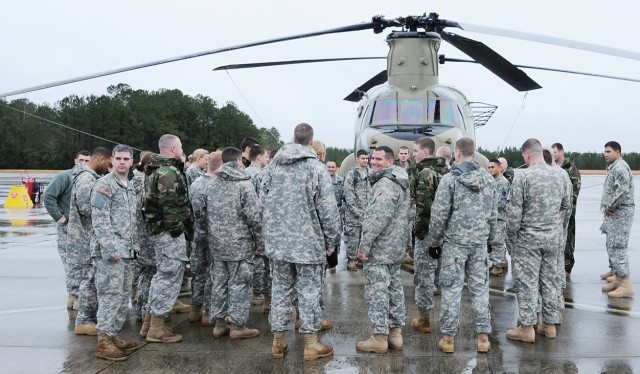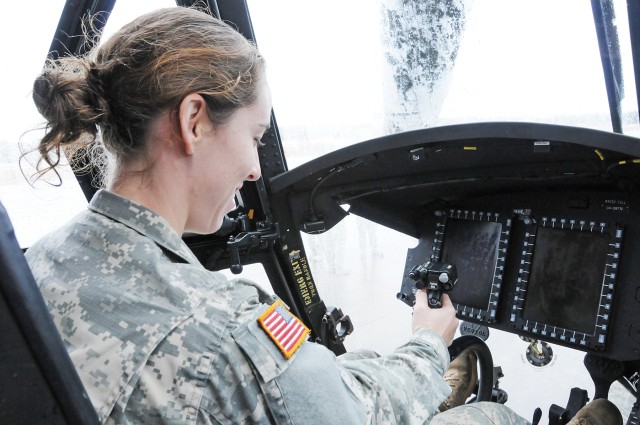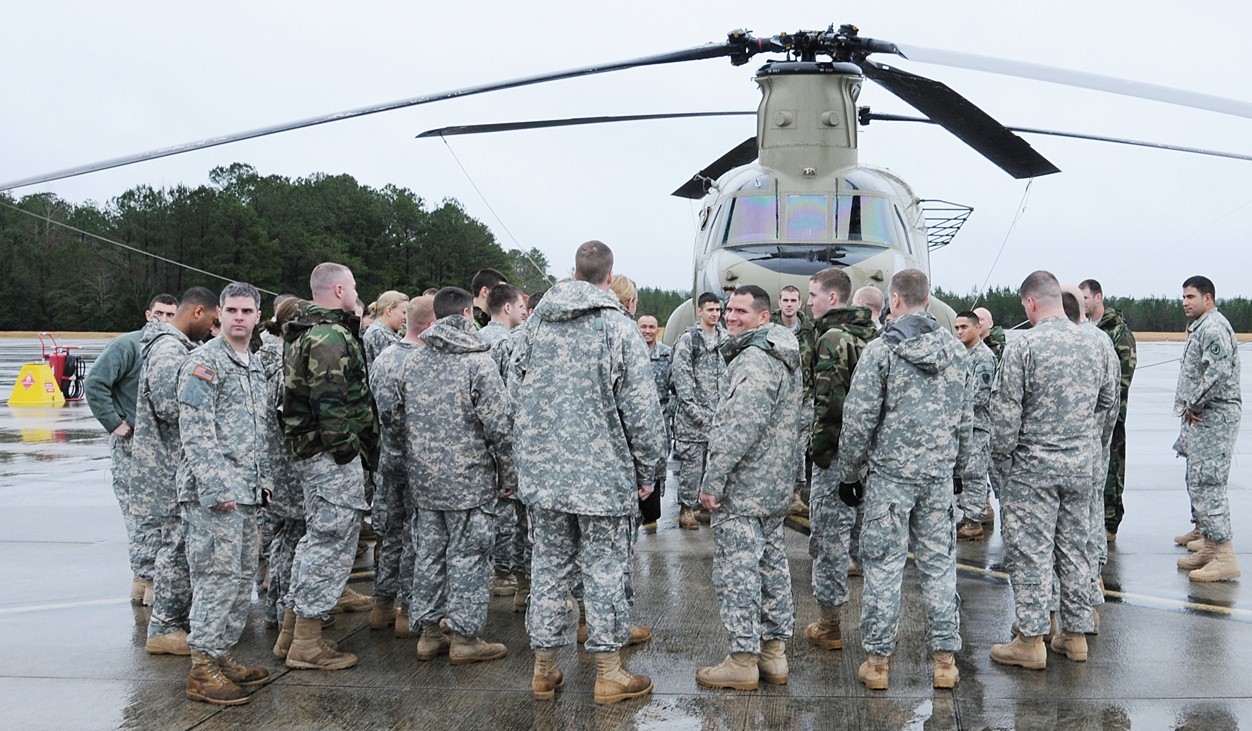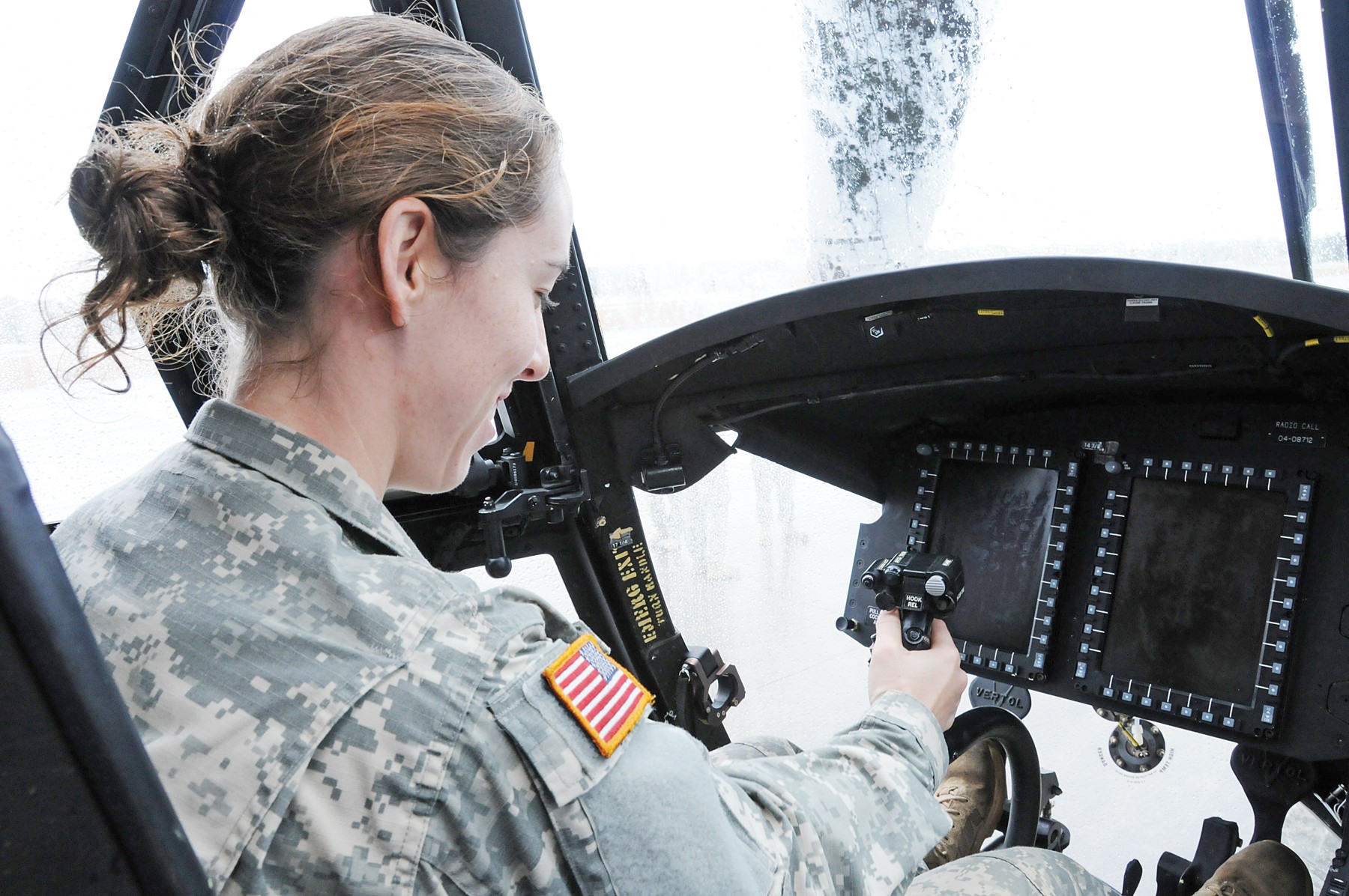FORT RUCKER, Ala. -- Fifty fledgling flight school students got their first real taste of Army Aviation and glimpsed into their futures Feb. 5 when they climbed inside a CH-47F Chinook cockpit at Knox Army Heliport here.
Their experience continued at Lowe Army Heliport for UH-60 Black Hawks and Hanchey Army Heliport for AH-64 Apaches and OH-58 Kiowas as part of Aircraft Orientation, a recent addition to the Basic Officer Leadership Course Bravo program, according to Capt. Jill Lowery, BOLC team leader.
"It is designed to provide officers in training a basic understanding of the different rotary platforms," Lowery said. "The best way to describe the orientation is a staff ride to the flight line ... to increase the student's knowledge and motivate them prior to entering into their next phase of training."
Initiated by 110th Aviation Brigade leaders, Aircraft Orientation was developed in light of Aviation's "Big Opportunity," said CW4 Sam Baker III, B Company, 1st Battalion, 223rd Aviation Regiment executive officer. Officials hope the new program eliminates training inefficiencies and allows Soldiers to share their ideas with commanders.
While National Guard Soldiers arrive at Fort Rucker with pre-assigned aircraft, active-duty student pilots undergo a selection process after completing six months of training in the TH-67 Creek helicopter. Aircraft Orientation makes this selection easier from the beginning, Lowery said.
"Over the years, flight school has continually adapted in order to provide the best training possible to flight students," Lowery said. "We noticed there was typically a lack of knowledge between aircraft types and missions prior to selection and advancement in training. The orientation used to be held in the classroom with a Power Point presentation, which was a step in the right direction; however, moving the orientation to the airfield only made sense. The resources are available, the instructors are willing and this is a good tool to motivate the students."
Many prior-service Soldiers have flown as passengers in Chinooks or Black Hawks, but not all are familiar with the birds' varying missions, said Capt. Adam Bock, B Co., 1st Bn., 223rd Avn. Regt. commander. Airfield visits enable commanders to explain those differences.
Before climbing inside any particular bird, instructors or commanders give briefs regarding the helicopters.
The ability to visualize what future career paths may look like is critical to some students.
"I liked talking to the commanders and meeting people who work with the different airframes," said 2nd Lt. Mia Odom, D Company, 1st Battalion, 145th Aviation Regiment. "It dispels myths."
She said she hopes to fly UH-60s, but after seeing all four helicopters, noted she will be more open when making her decision.
Comparing the different aircraft helped secure 2nd Lt. Jason Bogardus' choice that Black Hawks are right for him. He, too, appreciated meeting instructor pilots, crew members and commanders, helping him learn what the UH-60 community will be like.
CW3 Andre Arguello, B Co., 1st Bn., 223rd Avn. Regt. operations officer and CH-47 instructor pilot, assisted Odom and Bogardus throughout the tour. He believes the new program gives IPs and commanders the chance to mentor future Army Aviators.
"Picking an aircraft is a career decision," Arguello said. "It's a life decision that an Army Aviator has to make. Coming out to actually see what the (aircraft) capabilities (are) and to talk to some people in that community gives them a better understanding of what that airframe's mission is. It gives them a glimpse of their future."




Social Sharing